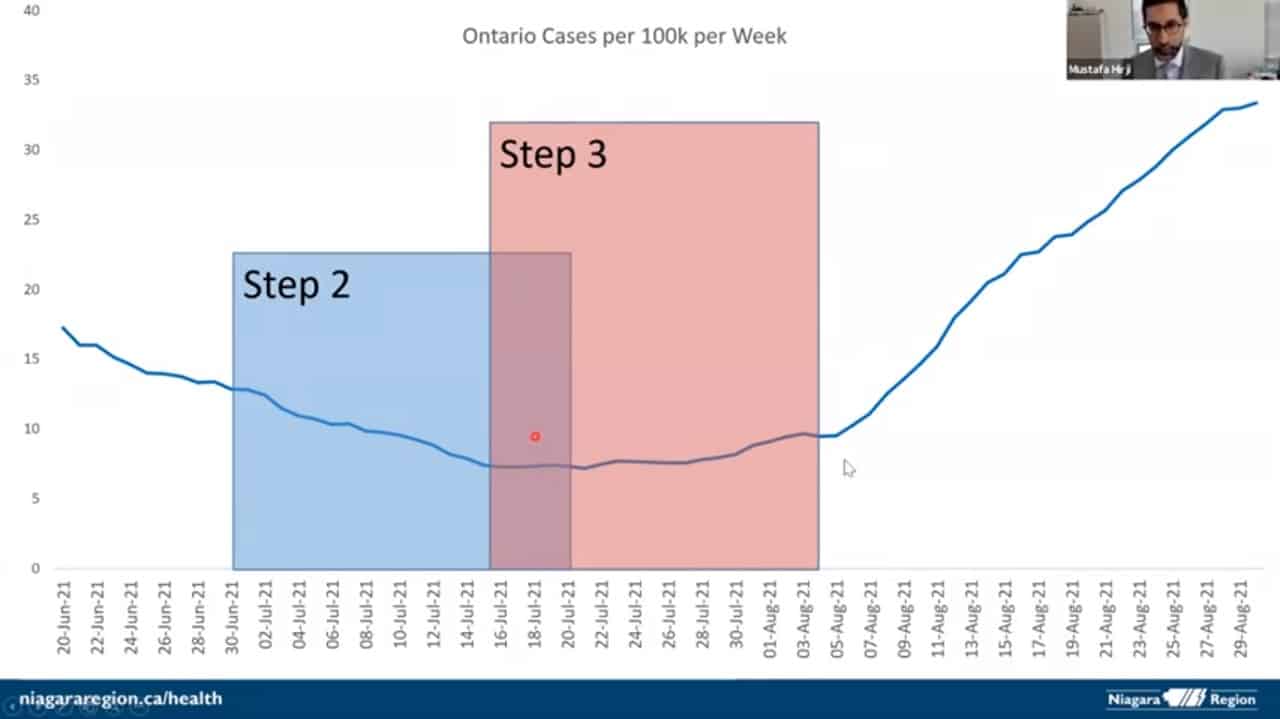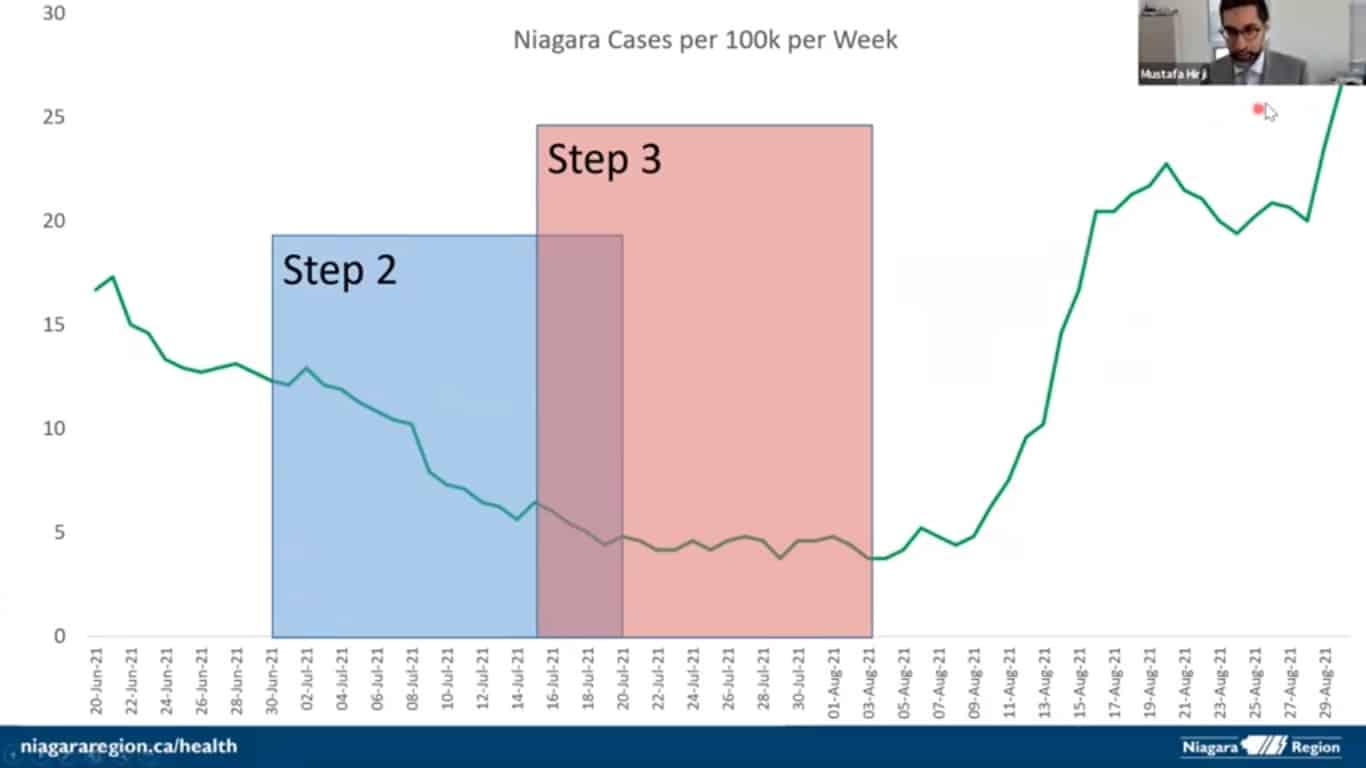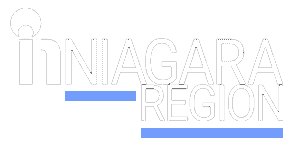Niagara’s top doc expects COVID-19 outbreaks and spreads in schools
Published August 30, 2021 at 8:02 pm

Niagara’s top doctor is conveying cautious optimism about sending children to school next week, in spite of Ontario’s missed opportunity to contain the fourth wave.
Dr. Mustafa Hijri, Niagara Region’s acting medical officer of health, explained during a media briefing on Monday that COVID-19 cases among children are inevitable, although he believes schools will be “relatively safe” for children due to health interventions such as cohorting. During the same briefing, Dr. Hijri linked the uptick in cases counts to Ontario government’s “strategic error” of entering Step 3 of its reopening plan in mid-July, after just 16 days in Step 2.
“Hopefully with this basket of lots of different interventions, despite cases being relatively high right now, we will be able to keep schools relatively safe,” Hijri said. “Unfortunately, with cases as high as they are, cases are unfortunately going to get into schools.
“Because so many students are under the age of 12 and cannot be vaccinated, I think we are going to see spread in schools and outbreaks in schools. But hopefully if we are doing all of these things, we will be able to keep schools open and do better than we were over the last school year.”
The health interventions, of course, include vaccination of children born in 2009 or earlier; daily screening; improved ventilation and air filtration; masking; testing; and isolating cohorts.
The provincial government has stepped up its game with improving ventilation in schools. This came after Ontario children missed more days of in-person learning in 2020-21 than their counterparts in every other Canadian province.
At the same time, Hijri noted that Ontario’s climbing case counts can be tied to decisions that Premier Doug Ford and the Progressive Conservative Party of Ontario government made earlier this summer.
The province moved to Step 2 on June 30. It is generally believed that there needs to be at least 21 days to see the effects of relaxed restrictions. Just sixteen days later, on July 16, the Ford government moved to Step 3, with the loosest restrictions since the beginning of the pandemic.
Hijri shared a chart that illustrated that the rising case rates in Ontario started roughly three weeks after the start of Step 3.

The trendline has been similar for the Niagara Region. Nirji said the region’s case numbers were flat in mid-July, but started to move upward earlier this month.

Hirji suggesting remaining in Step 2 longer would have led to “a very gentle upwards trajectory” in COVID-19 cases, which presumably would have allowed more time for to increase vaccination uptake. What has transpired instead is the “fast-spreading” Delta variant has been able to spread before many people were able and/or willing to receive a COVID-19 vaccination.
About 82 per cent of Niagara’s COVID-19 patients that have needed a hospital stay this month have been unvaccinated.
“I think if we had followed the provincial framework correctly, we could have gone through Step 2, seen cases remaining slightly go up, and had an opportunity to step in to address it,” Hirji said. “But, of course, the province rushed into Step 3 before we had a chance to see the effects of Step 2, and that’s where we start to see cases go up. And at Step 3, we see a rise in cases.
“I think there was a strategic error there where, once again, the province was a bit impatient about reopening and we’re seeing that we weren’t able to manage the reopening and there were surges of cases as a result.”
An unvaccinated person in the region who gets COVID-19 is 21.2 times more likely to be hospitalized than someone who is double-vaxxed, Hirji said.
As of midday Monday, Niagara Region had given one dose to 72.1 per cent of its eligible population and 65.6 per cent had received a second jab.
In the intermediate and secondary school aged 12 to 17 age bracket, the uptake is 66 per cent and 52 per cent respectively.
INsauga's Editorial Standards and Policies








